Abstract
This study applied data envelopment analysis (DEA) to the evaluation of rural primary health care programs, which are known to be very heterogeneous. DEA is a mathematical programming technique that optimizes the relative efficiency ratio of current inputs over current outputs for each decision-making unit (DMU). It produces a summary scalar efficiency ratio for each DMU and identifies the amount of inefficiency. The data came from the National Evaluation of Rural Primary Health Care Programs. Despite the demands of the software used for homogeneous units and nonzero values, the efficiency analysis was useful to the evaluation. It assessed multiple inputs and multiple outputs simultaneously, and identified directly those units that are performing efficiently or inefficiently when compared to specific peer programs. This then allowed us to compare this efficient-inefficient classification with other data, first, to verify the classification and, second, to assist with the evaluation. DEA can contribute to the evaluation of heterogeneous health programs, especially when used in conjunction with other methods of analysis.
Full text
PDF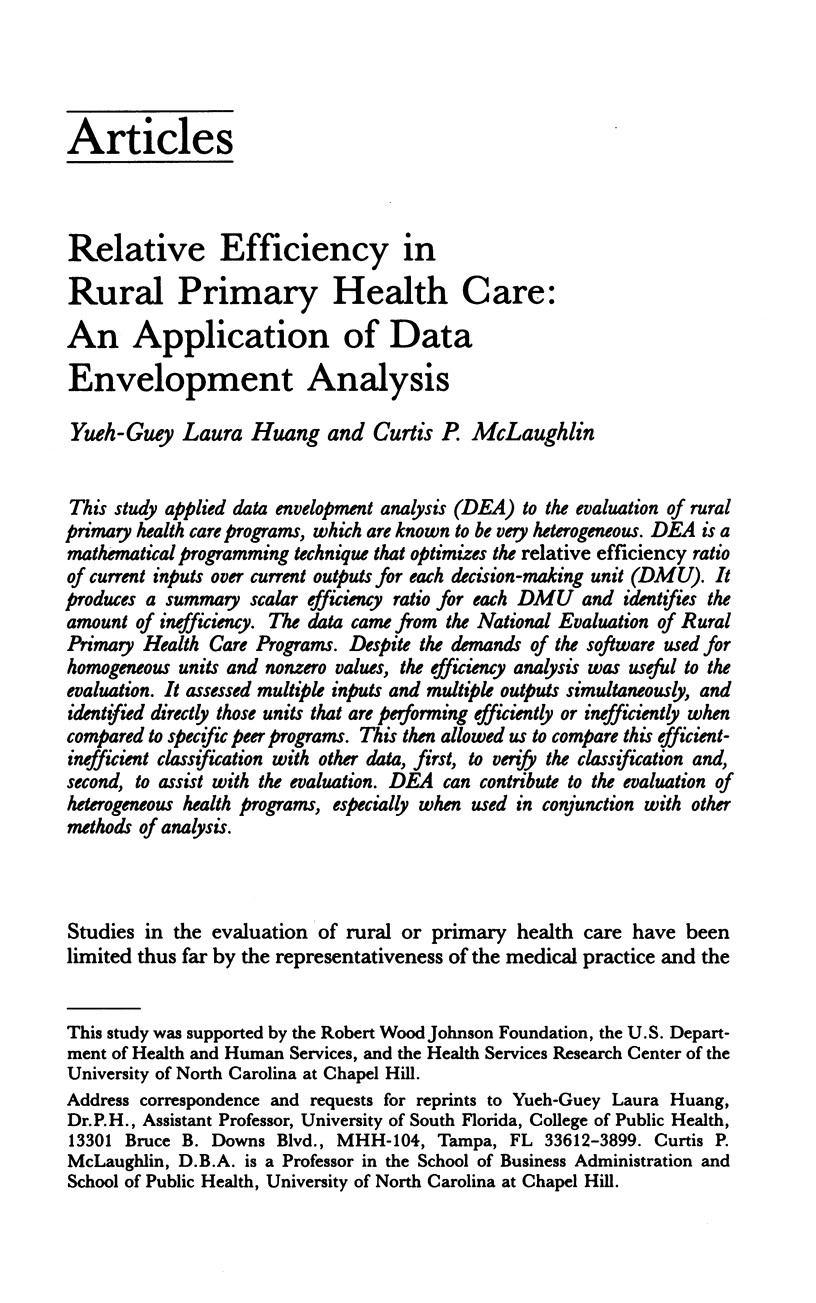
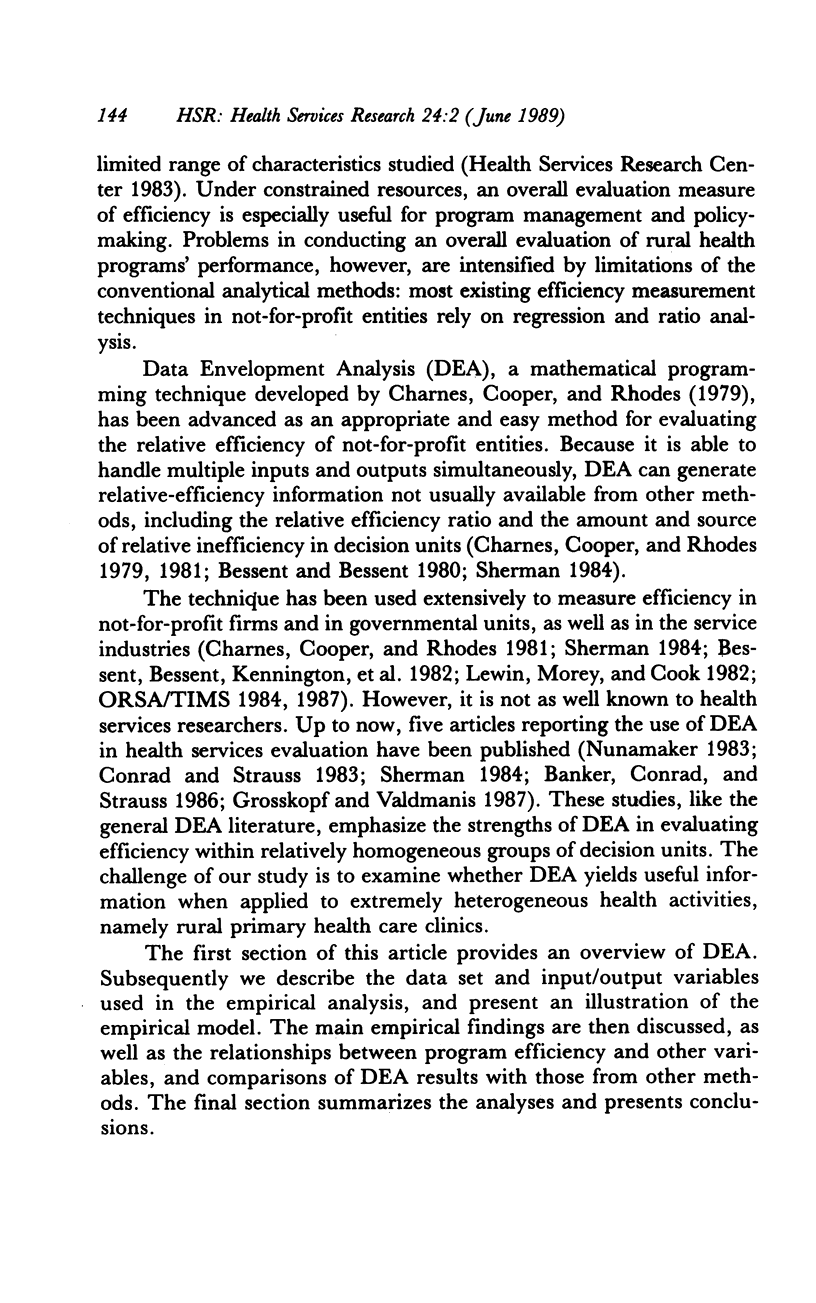
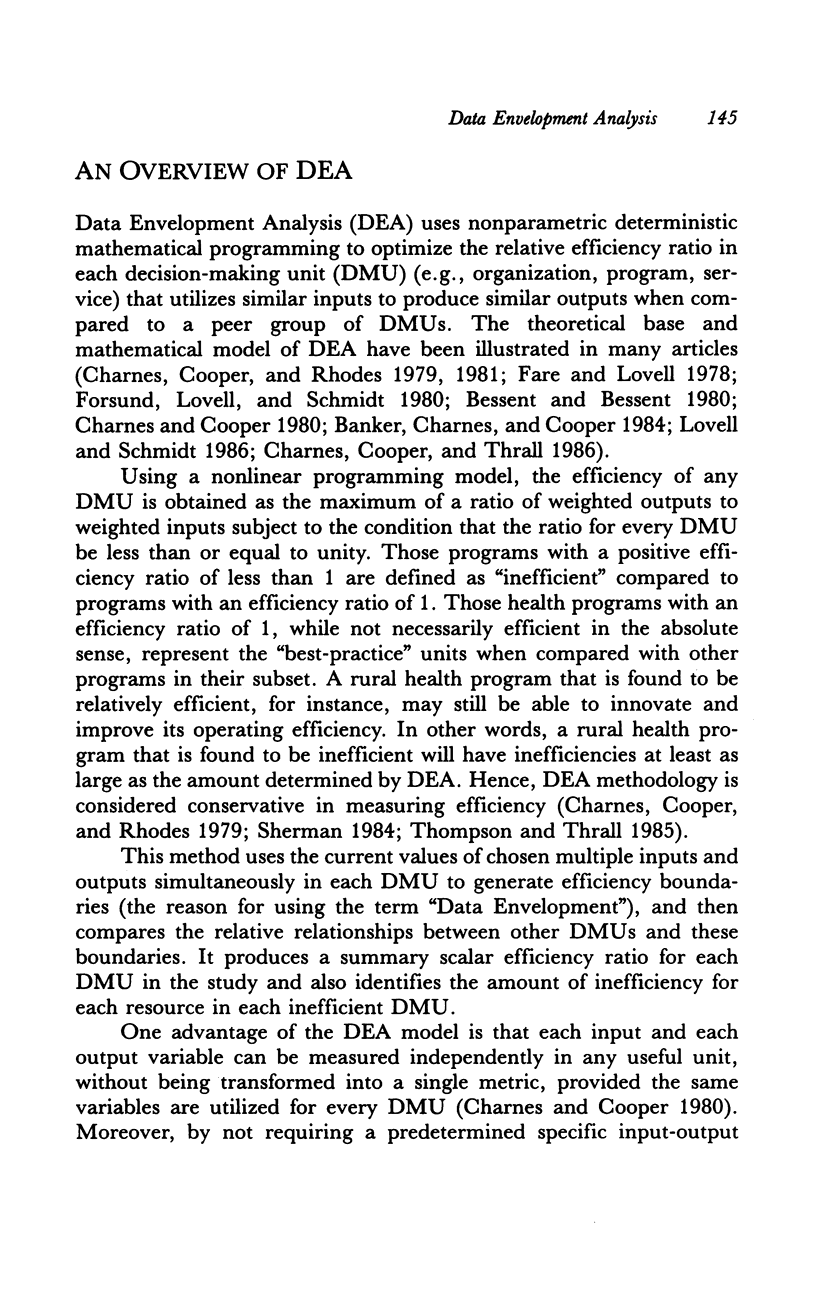
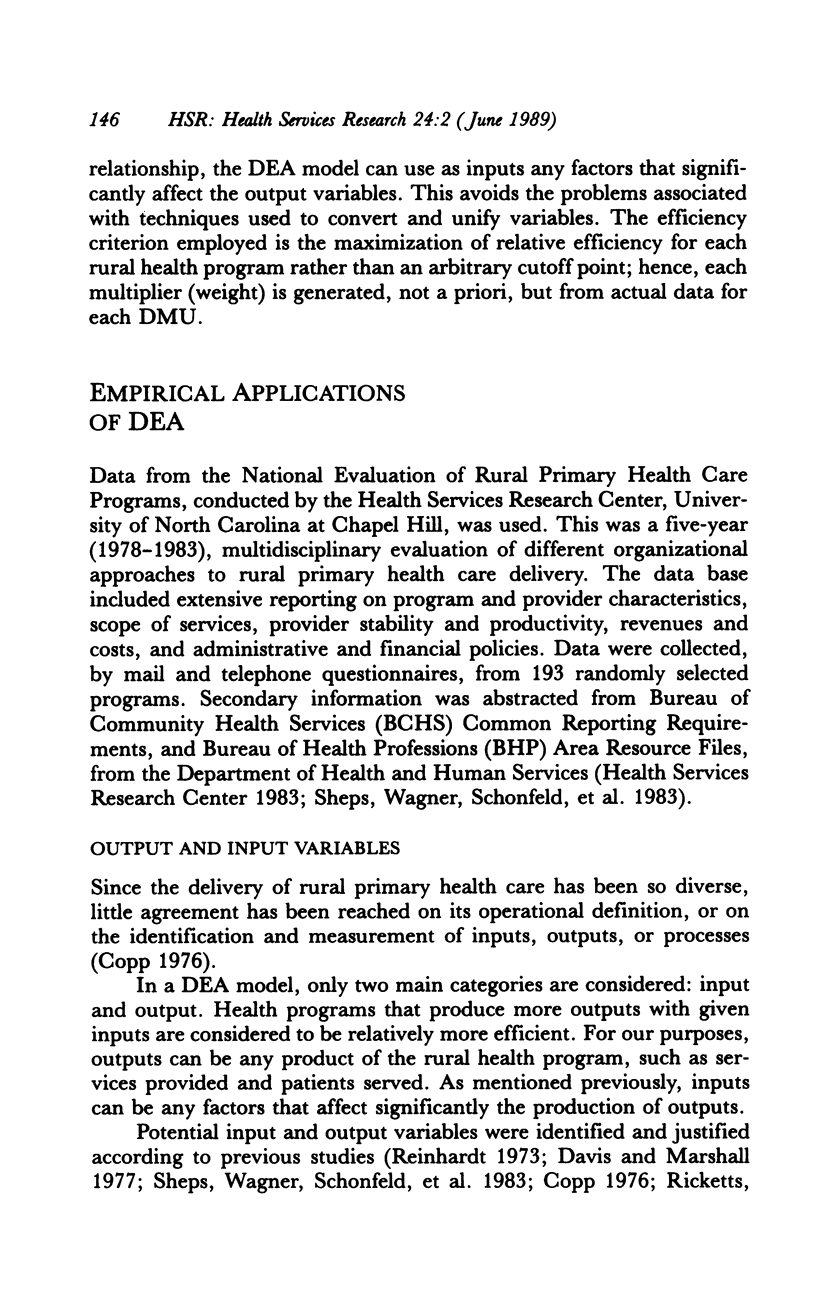

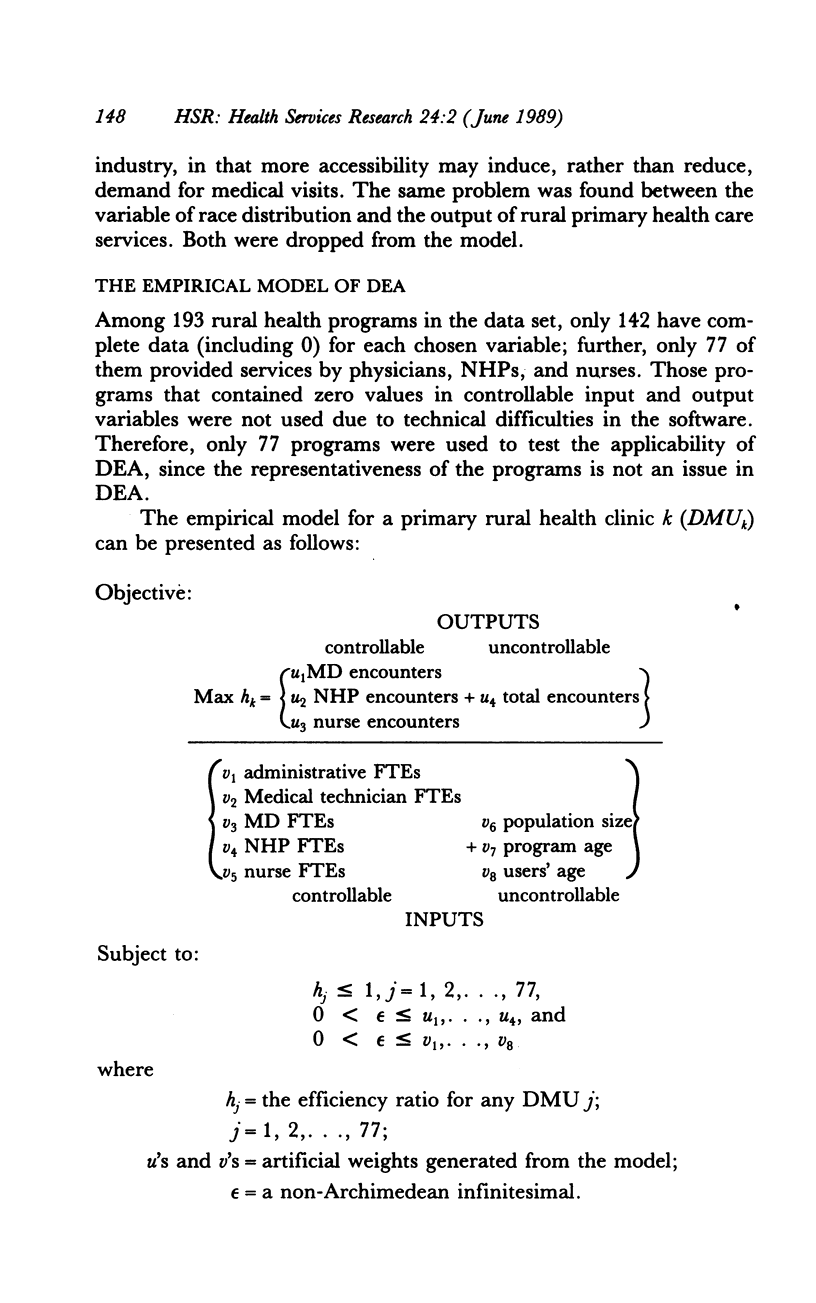
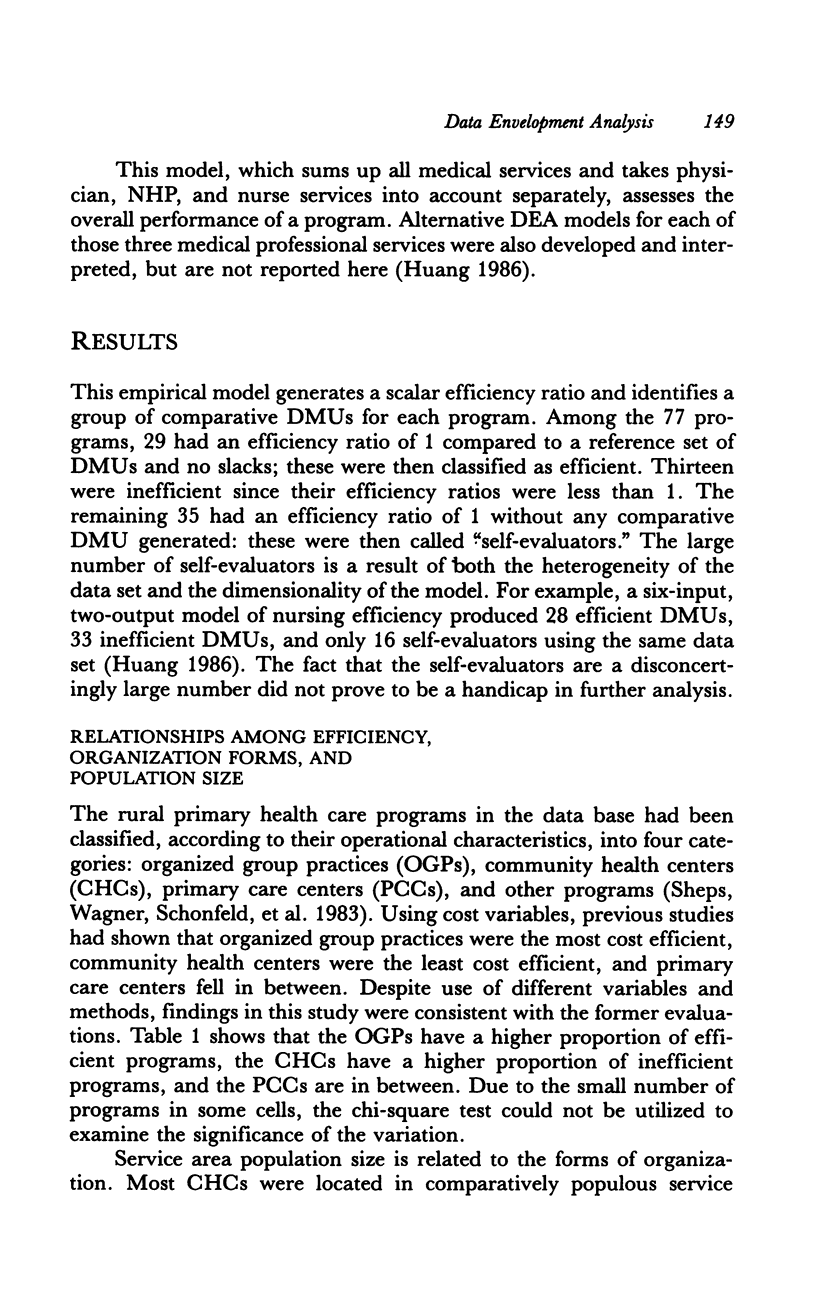
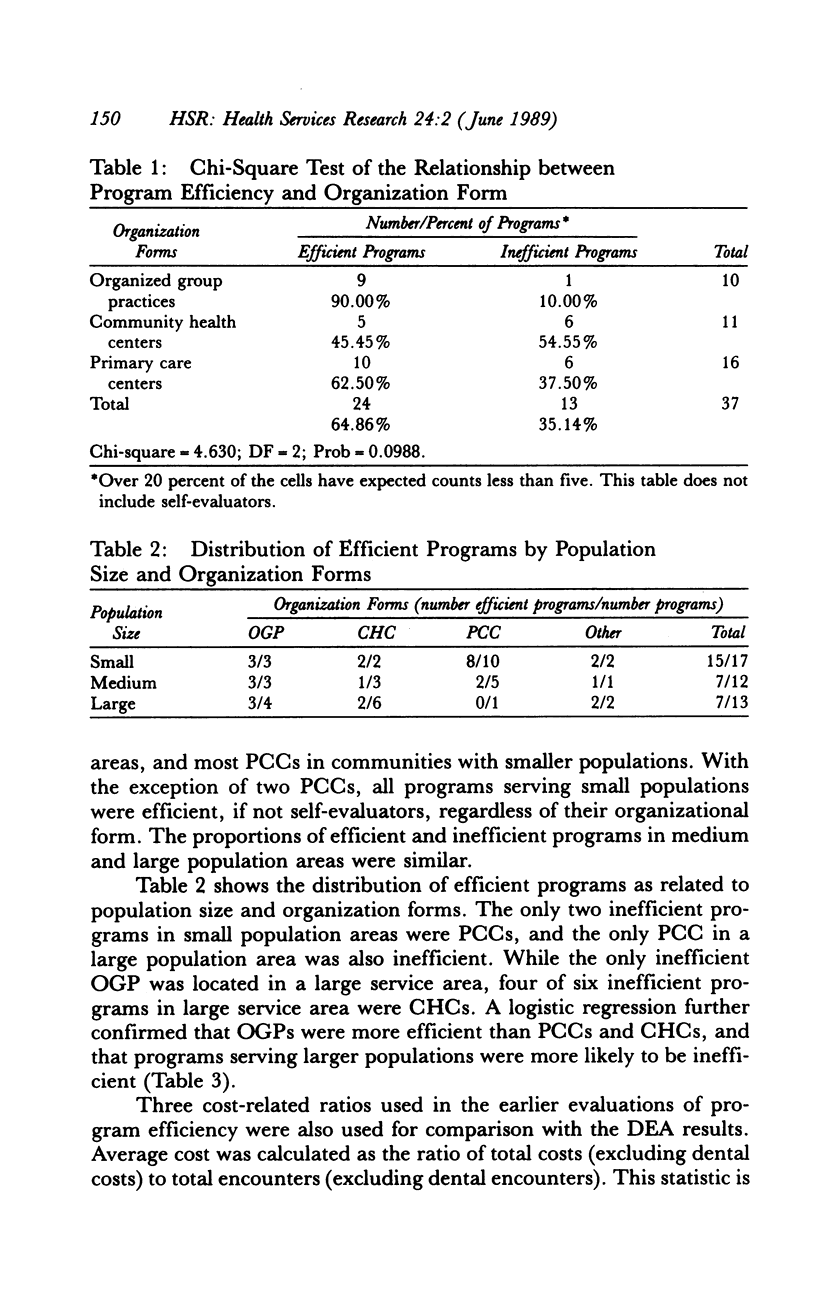
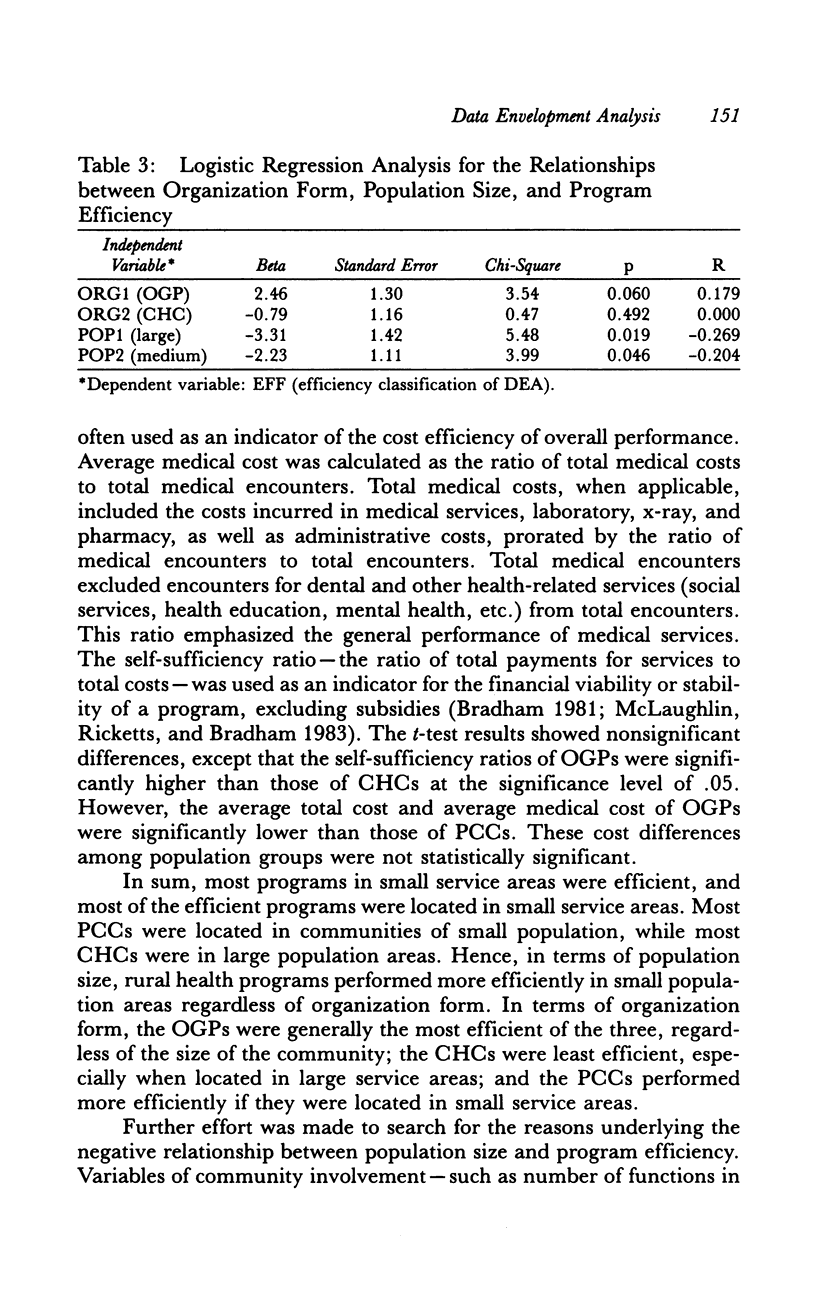

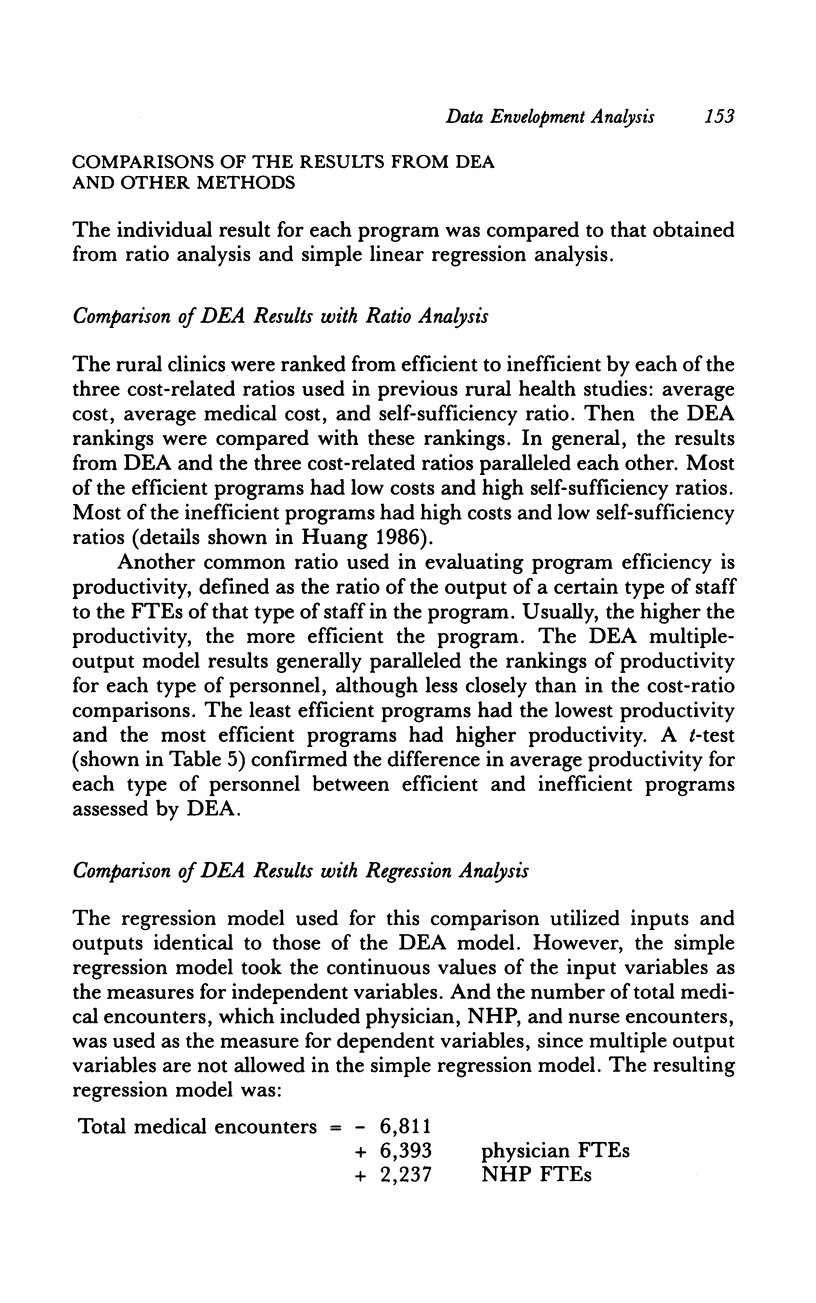
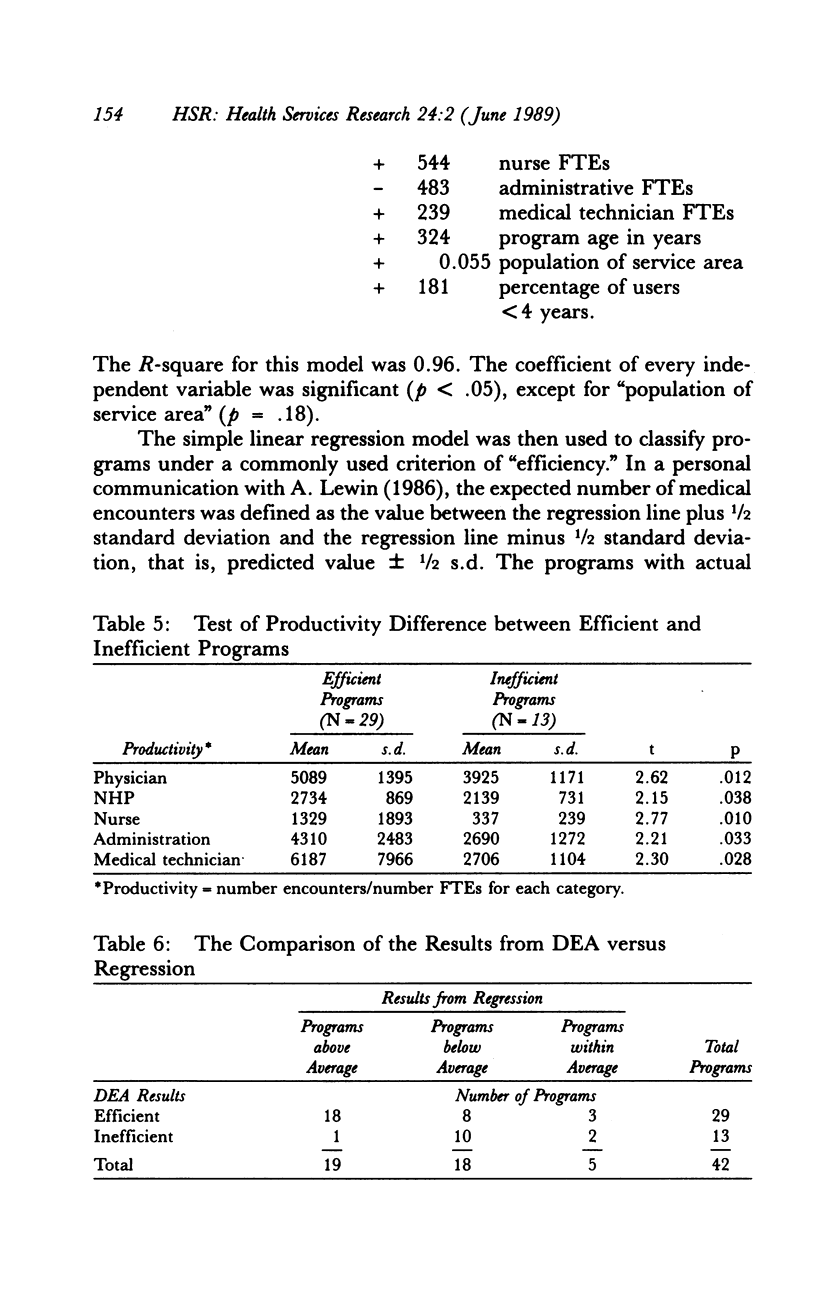
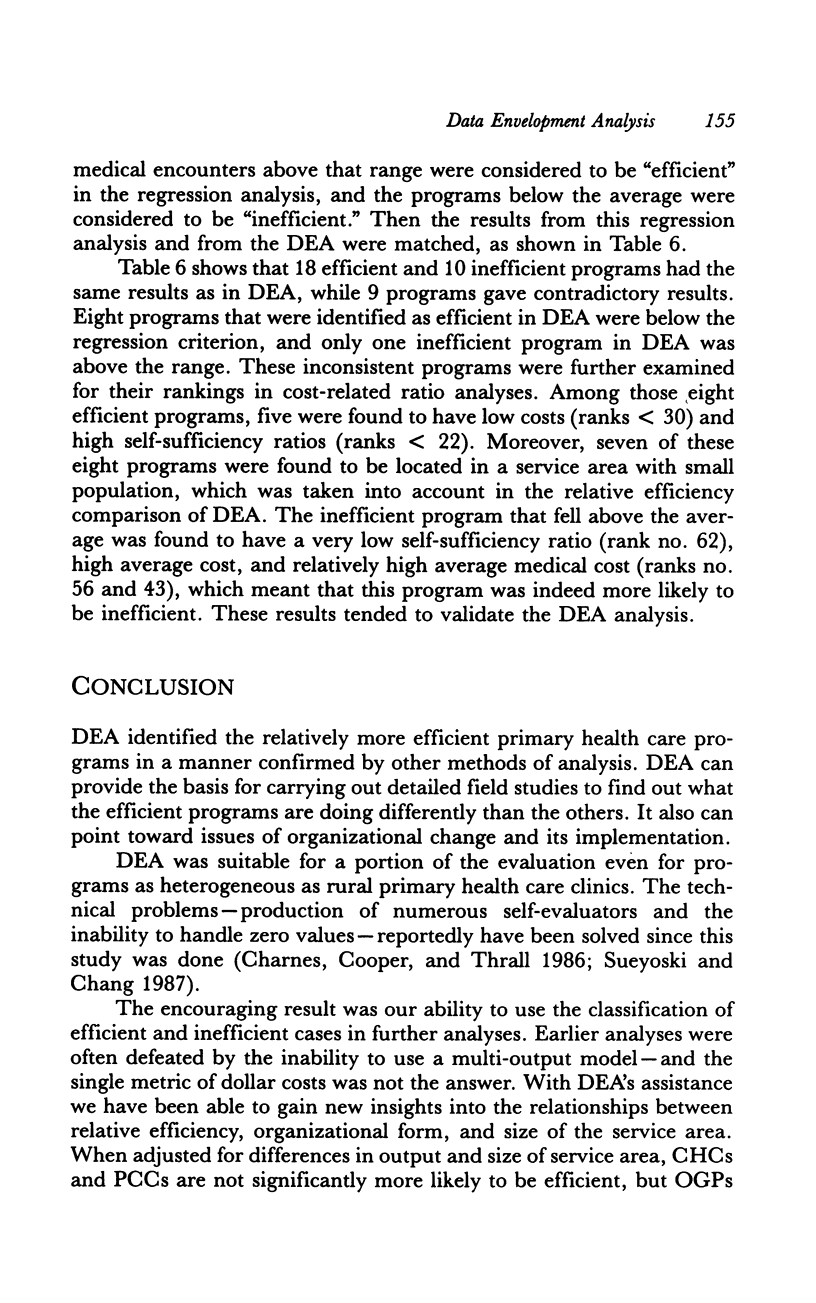
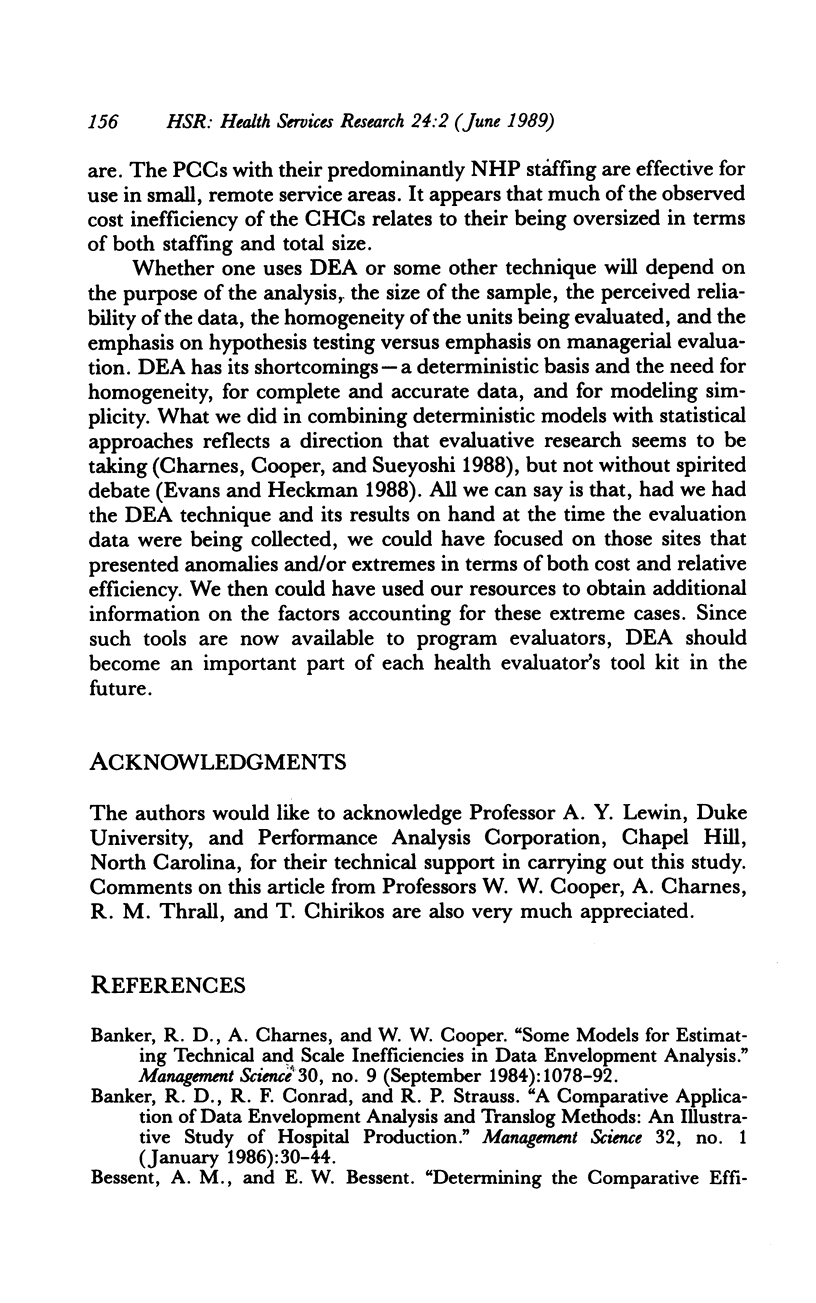
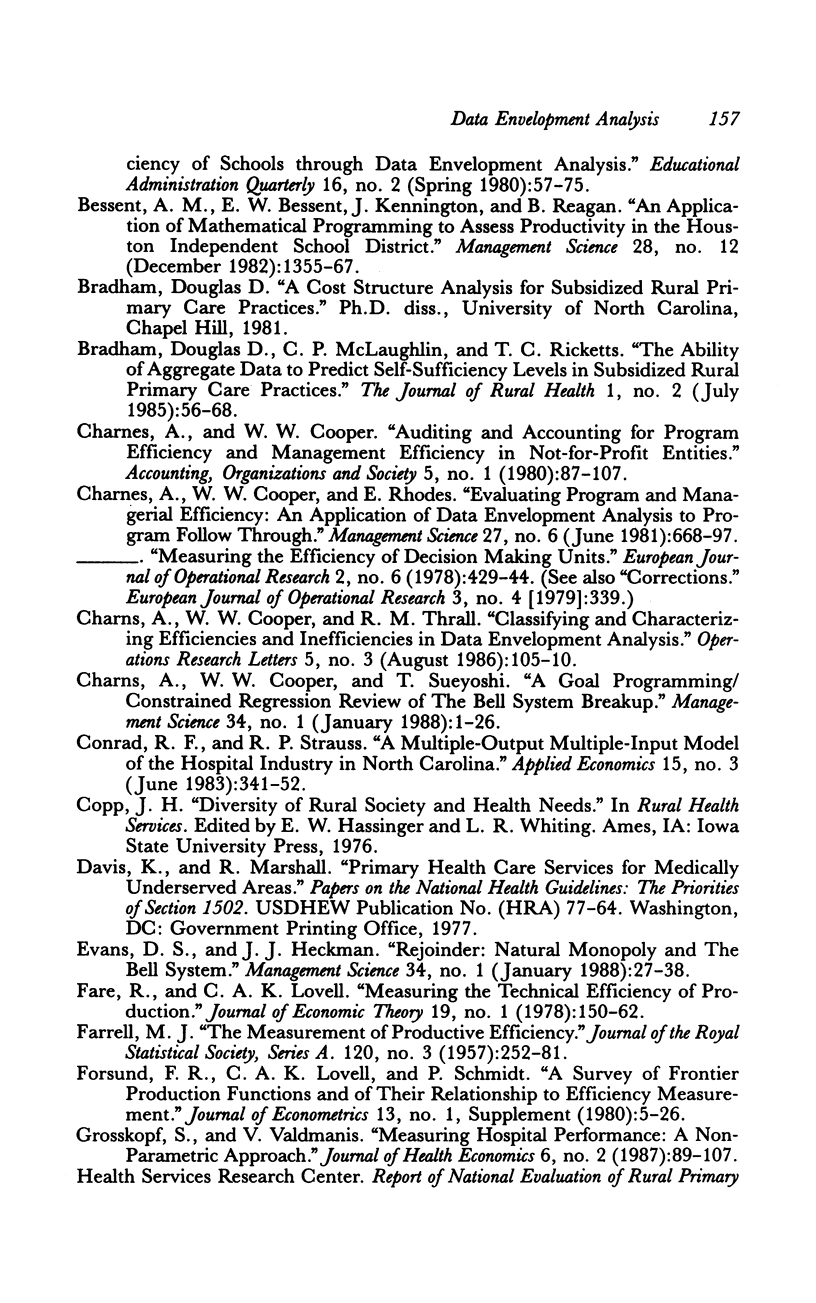
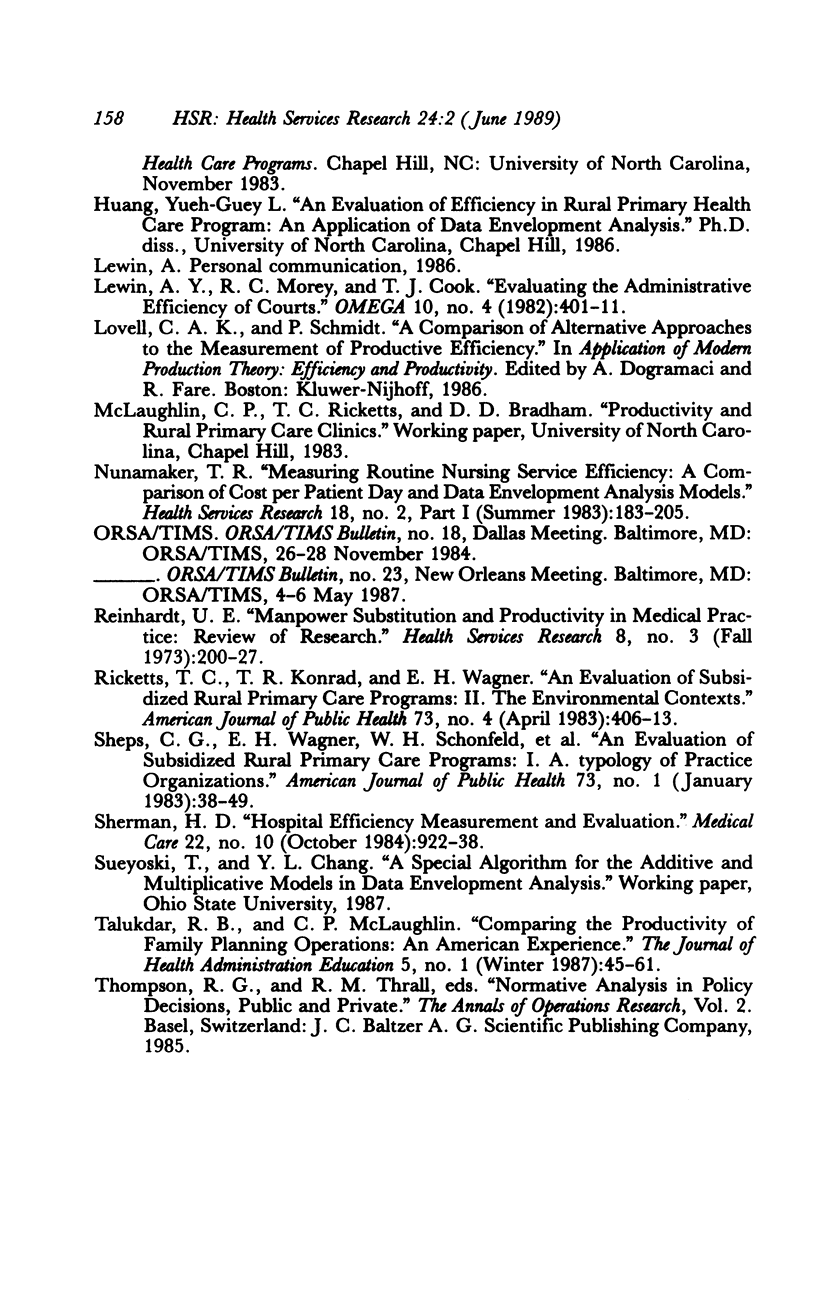
Selected References
These references are in PubMed. This may not be the complete list of references from this article.
- Bradham D. D., McLaughlin C. P., Ricketts T. C. The ability of aggregate data to predict self-sufficiency levels in subsidized rural primary care practices. J Rural Health. 1985 Jul;1(2):56–68. doi: 10.1111/j.1748-0361.1985.tb00127.x. [DOI] [PubMed] [Google Scholar]
- Grosskopf S., Valdmanis V. Measuring hospital performance. A non-parametric approach. J Health Econ. 1987 Jun;6(2):89–107. doi: 10.1016/0167-6296(87)90001-4. [DOI] [PubMed] [Google Scholar]
- Nunamaker T. R. Measuring routine nursing service efficiency: a comparison of cost per patient day and data envelopment analysis models. Health Serv Res. 1983 Summer;18(2 Pt 1):183–208. [PMC free article] [PubMed] [Google Scholar]
- Reinhardt U. E. Manpower substitution and productivity in medical practice: review of research. Health Serv Res. 1973 Fall;8(3):200–227. [PMC free article] [PubMed] [Google Scholar]
- Ricketts T. C., Konrad T. R., Wagner E. H. An evaluation of subsidized rural primary care programs: II. The environmental contexts. Am J Public Health. 1983 Apr;73(4):406–413. doi: 10.2105/ajph.73.4.406. [DOI] [PMC free article] [PubMed] [Google Scholar]
- Sheps C. G., Wagner E. H., Schonfeld W. H., DeFriese G. H., Bachar M., Brooks E. F., Gillings D. B., Guild P. A., Konrad T. R., McLaughlin C. P. An evaluation of subsidized rural primary care programs: I. A typology of practice organizations. Am J Public Health. 1983 Jan;73(1):38–49. doi: 10.2105/ajph.73.1.38. [DOI] [PMC free article] [PubMed] [Google Scholar]
- Sherman H. D. Hospital efficiency measurement and evaluation. Empirical test of a new technique. Med Care. 1984 Oct;22(10):922–938. doi: 10.1097/00005650-198410000-00005. [DOI] [PubMed] [Google Scholar]
- Talukdar R. B., McLaughlin C. P. Comparing the productivity of family planning operations: an American experience. J Health Adm Educ. 1987 Winter;5(1):45–61. [PubMed] [Google Scholar]


